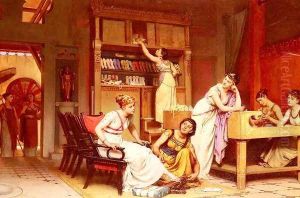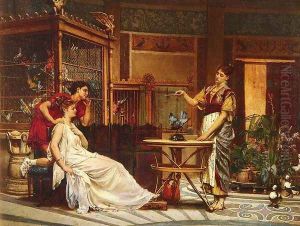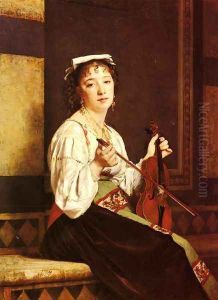Leon Glaize Paintings
Leon Glaize, born in 1842 and passing away in 1932, was a French painter recognized for his contributions to the academic and decorative arts traditions of the 19th and early 20th centuries. Glaize's work is emblematic of the period's artistic movements, reflecting the academic art principles of meticulous craftsmanship, classical themes, and an emphasis on beauty and technical skill.
Glaize was trained in the prestigious École des Beaux-Arts in Paris, the heart of French academic art education, under the tutelage of renowned artists such as Alexandre Cabanel. This classical education not only honed his technical skills but also ingrained in him a love for historical and mythological subjects, which frequently appeared in his works. Glaize's paintings often depicted scenes from ancient history or mythology, rendered with an attention to detail and a richness of color that was admired by his contemporaries.
Over his career, Glaize also contributed to the decoration of several important public buildings in France, showcasing his versatility and command over large-scale works. His murals and decorations are testament to the era's penchant for blending art with architecture to create immersive environments, a task that required not only artistic skill but also a profound understanding of space and narrative.
Despite his achievements, Leon Glaize's legacy, like that of many of his contemporaries, has been somewhat overshadowed by the rise of modernist movements in the late 19th and early 20th centuries. However, his work remains an important part of the tapestry of French art history, offering insights into the academic traditions that shaped Western art for centuries. Glaize's commitment to beauty, technical excellence, and classical themes provides a contrast to the evolving artistic landscapes of his time, making his oeuvre a fascinating study for those interested in the transitions of art history.


